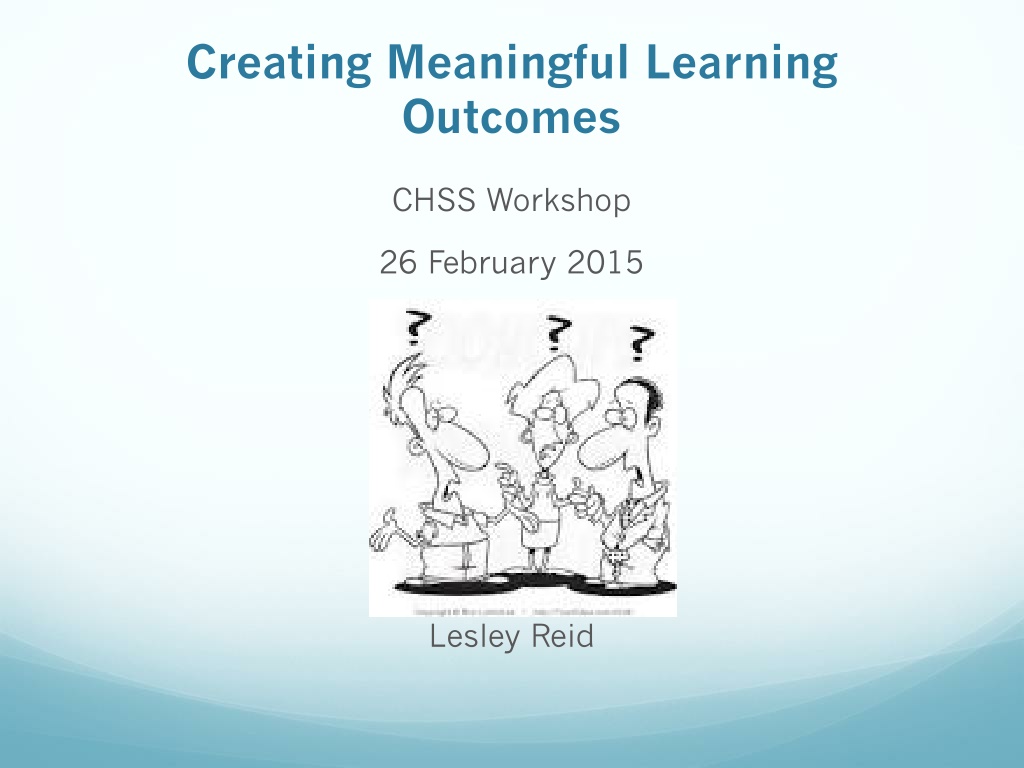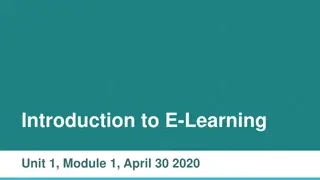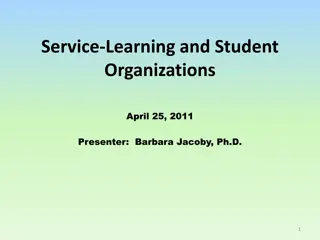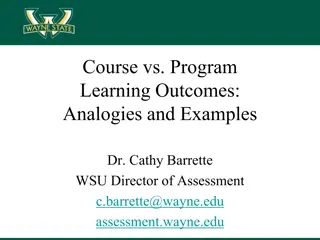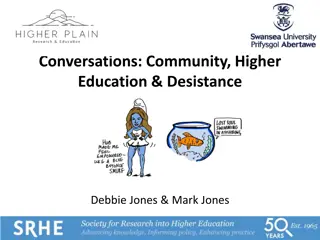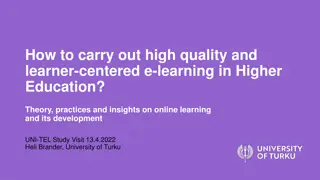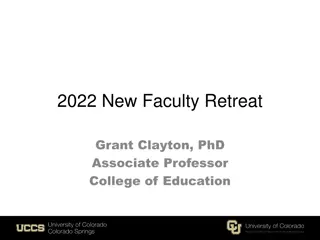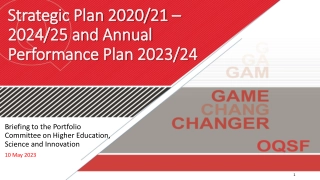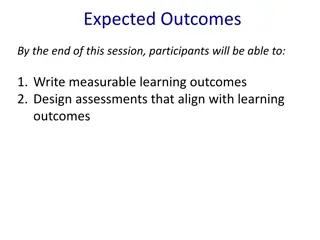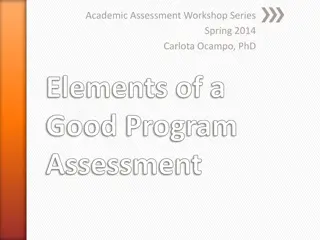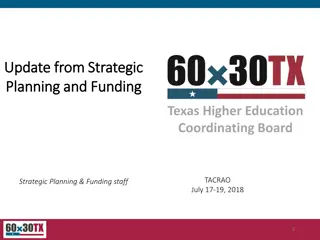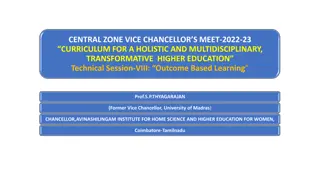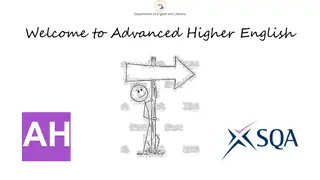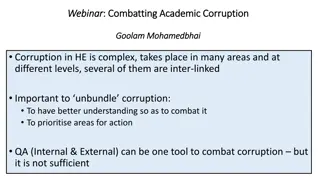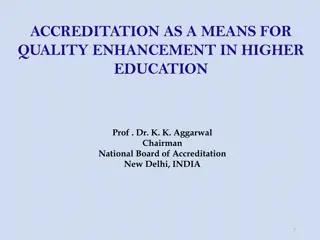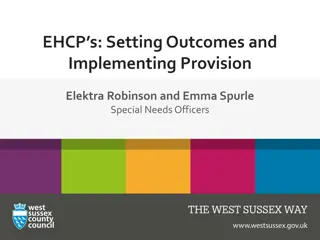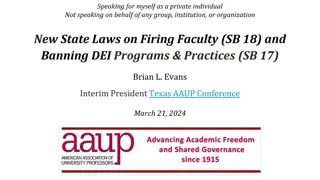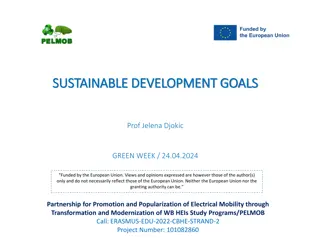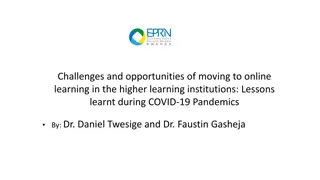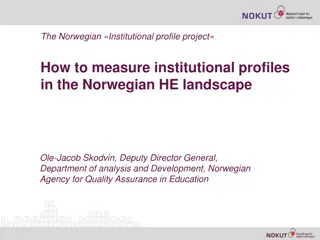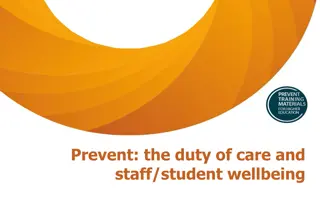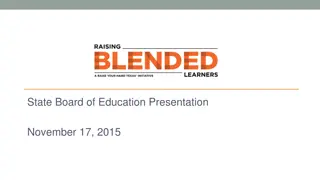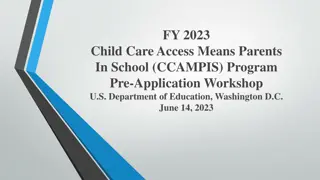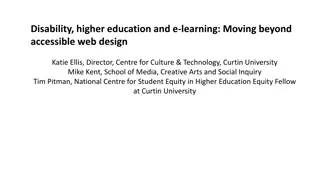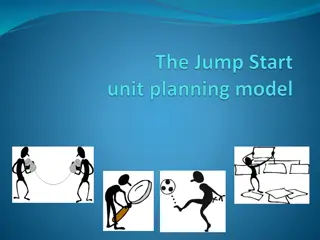Enhancing Learning Outcomes in Higher Education: Strategies and Considerations
Explore the significance of learning outcomes in higher education, including aligning curriculum, assessment, and teaching. Discover frameworks for writing effective learning outcomes and the impact on student understanding and skill development. Consider the complexities of measuring learning outcomes in humanities and social sciences, and delve into models emphasizing competency-based approaches and holistic learning.
Uploaded on Sep 25, 2024 | 0 Views
Download Presentation

Please find below an Image/Link to download the presentation.
The content on the website is provided AS IS for your information and personal use only. It may not be sold, licensed, or shared on other websites without obtaining consent from the author. Download presentation by click this link. If you encounter any issues during the download, it is possible that the publisher has removed the file from their server.
E N D
Presentation Transcript
Creating Meaningful Learning Outcomes CHSS Workshop 26 February 2015 Lesley Reid
Aims for today Develop understanding of how learning outcomes relate to models of student curriculum Identify frameworks that might help Develop skills in writing learning outcomes
Course Requirements for Learning Outcomes for PCIM by 31stMarch Formal approval (BoS, CUGLAT) not required unless spirit and content of LOs significantly changing 5 (or fewer) LOs per course in CCAMS (additional LOs can appear in course booklets) Student-friendly language (in descriptor as a whole) Guided by SCQF level descriptors (categories, language, content, progression, differentiation) Contextualised in subject area
Learning Outcomes can help . Students: understand what is expected of them develop skills of reflection develop metacognitive capacity Staff: focus on important student learning design courses that align curriculum, teaching and assessment enable progression, differentiation, continuity of learning across programmes
Constructive alignment in course design CURRICULUM ASSESSMENT TEACHING
health warning for learning outcomes in the humanities and social sciences? models of curriculum, understandings about learning Product- easily measured Process- harder to measure Praxis- meaning negotiated in relation to values and action
Product Model competency based, student as a receptacle for knowledge skill mastery easy to assess reductionist, instrumental behavioural objectives, rather than learning driven what is to be learned is predetermined trivial behaviours v holistic understanding
Process Model Knowing is a process that involves them in developing their own useful strategies for reducing complexity and clutter (Bruner, 1972) better for higher education humanities learning? open ended student activities with developing capacities working out relationships between ideas developing conceptual frameworks competencies are never mastered , only improved allows for serendipitous learning allows for differentiated learning
Frameworks that can help Graduate Attributes framework Subject Benchmark statements Scottish Credit Qualifications Framework (SCQF) Hierarchical Skill taxonomies e.g. Bloom Knowledge of Curriculum for Excellence
PCIM project briefing learning outcome advice 5 umbrella statements linked to SCQF categories (K&U, Applied K&U, Generic Cog Skills, Communication, Autonomy) guided by SCQF level descriptors (language, content, progression, differentiation) tension between wordy jargon and student- friendly speak contextualised within field of study/ subject area
Moving towards process/praxis models of curriculum progression, differentiation, continuity in learning learning intentions rather than objectives identify the understanding and variety of skills, capacities that students might develop learner has more responsibility for own learning opportunities for value based co-co- co- co-construction of meaning?
7 steps to writing course learning outcomes 1. Decide on the important learning you want to enable 2. Do you have a spread across SCQF categories? 3. How many LOs ? Collapse into 5 or use booklet option? 4. Use correct SCQF level descriptor (8,10,11) handout to guide language and content 5. Check for progression in learning above and below using level descriptors 6. Contextualise within course / subject content 7. Review and Reflect
